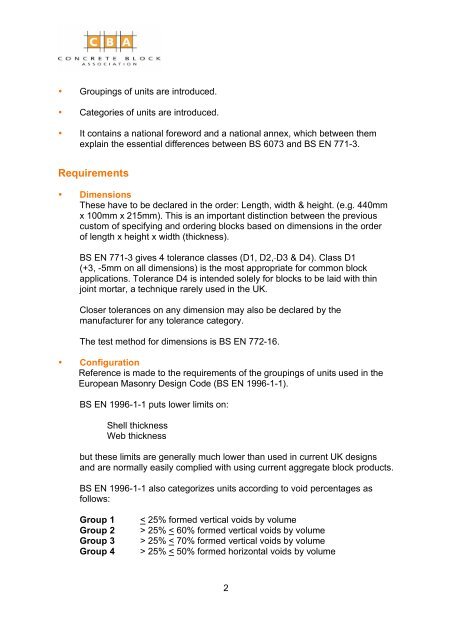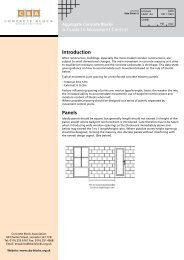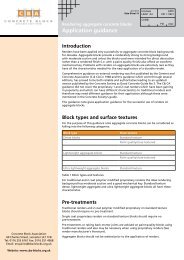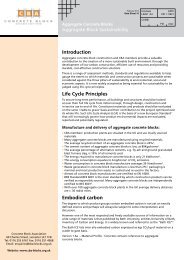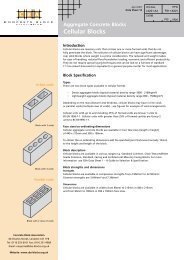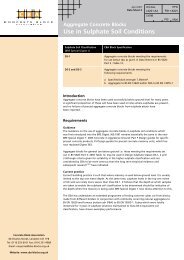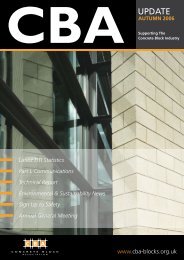Understanding BS EN 771-3: Aggregate concrete masonry units
Understanding BS EN 771-3: Aggregate concrete masonry units
Understanding BS EN 771-3: Aggregate concrete masonry units
- No tags were found...
Create successful ePaper yourself
Turn your PDF publications into a flip-book with our unique Google optimized e-Paper software.
• Groupings of <strong>units</strong> are introduced.• Categories of <strong>units</strong> are introduced.• It contains a national foreword and a national annex, which between themexplain the essential differences between <strong>BS</strong> 6073 and <strong>BS</strong> <strong>EN</strong> <strong>771</strong>-3.Requirements• DimensionsThese have to be declared in the order: Length, width & height. (e.g. 440mmx 100mm x 215mm). This is an important distinction between the previouscustom of specifying and ordering blocks based on dimensions in the orderof length x height x width (thickness).<strong>BS</strong> <strong>EN</strong> <strong>771</strong>-3 gives 4 tolerance classes (D1, D2, D3 & D4). Class D1(+3, -5mm on all dimensions) is the most appropriate for common blockapplications. Tolerance D4 is intended solely for blocks to be laid with thinjoint mortar, a technique rarely used in the UK.Closer tolerances on any dimension may also be declared by themanufacturer for any tolerance category.The test method for dimensions is <strong>BS</strong> <strong>EN</strong> 772-16.• ConfigurationReference is made to the requirements of the groupings of <strong>units</strong> used in theEuropean Masonry Design Code (<strong>BS</strong> <strong>EN</strong> 1996-1-1).<strong>BS</strong> <strong>EN</strong> 1996-1-1 puts lower limits on:Shell thicknessWeb thicknessbut these limits are generally much lower than used in current UK designsand are normally easily complied with using current aggregate block products.<strong>BS</strong> <strong>EN</strong> 1996-1-1 also categorizes <strong>units</strong> according to void percentages asfollows:Group 1Group 2Group 3Group 4< 25% formed vertical voids by volume> 25% < 60% formed vertical voids by volume> 25% < 70% formed vertical voids by volume> 25% < 50% formed horizontal voids by volume2


